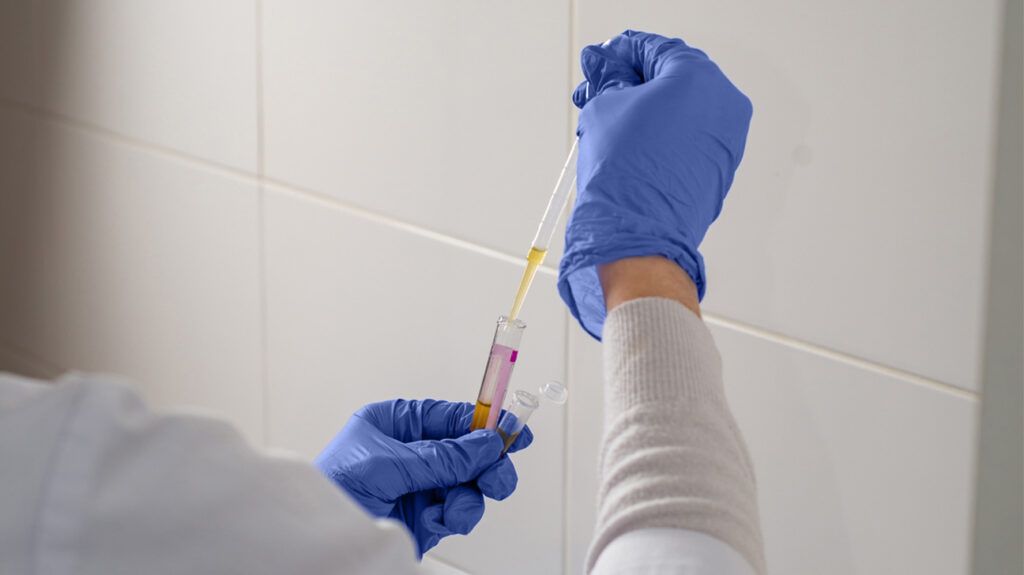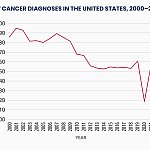
According to the
One area of interest is tests surrounding cholesterol levels and how these relate to coronary artery disease.
A study recently published in the European Heart Journal thoroughly looked at lipoproteins that have apolipoprotein B. Lipoproteins help carry fat throughout the body. Apolipoprotein B is a protein that is key to the lipoproteins that carry “bad” cholesterol.
The study found that apolipoprotein B particle count and lipoprotein(a) count were critical indicators of risk for coronary artery disease related to lipids.
The researchers who conducted this study wanted to see how the type, count, and size of apolipoprotein B-containing lipoprotein particles (apoB-P) affected the risk for coronary artery disease.
Patrick Kee, MD, PhD, a cardiologist with Vital Heart & Vein, who was not involved in the study, explained to Medical News Today that:
“ApoB, a structural protein, is present in all atherogenic lipoproteins, including LDL [low-density lipoprotein], VLDL [very-low-density lipoprotein], and IDL [intermediate-density lipoprotein]. Each particle contains one apoB molecule, making it a direct measure of the number of atherogenic particles in the bloodstream. This is crucial because the number of these particles, rather than just the amount of cholesterol they carry, is a key driver of atherosclerosis and subsequent cardiovascular events.”
The authors of this study note that measuring the concentration of apoB “reflects total apoB-P count in plasma.” Lipoprotein(a) is another lipoprotein that falls under the apoB-P umbrella.
Researchers looked at participant data from a UK Biobank subcohort. They excluded participants who had coronary artery disease and other conditions like stroke before the study, as well as people who were taking lipid-lowering medications.
The analysis included 207,386 participants. Throughout the follow-up, 7,585 participants developed coronary artery disease. Additionally, researchers did external replication analyses using 10,857 participants from the Swedish Infrastructure for Medical Population-based Life-Course and Environmental Research (SIMPLER).
The researchers considered incidents of coronary artery disease to be events like hospitalization or death from a heart attack. Their statistical analyses accounted for multiple factors like “good” cholesterol particle count, blood pressure, and body mass index.
They analyzed several lipoproteins and the related risk for coronary artery disease. Overall, apoB-P was associated with an increased risk for coronary artery disease.
One standard deviation increase in apoB-P translated to a 33% greater risk of developing coronary artery disease. In the SIMPLER population, this same increase translated to a 26% increase in risk for coronary artery disease.
Regarding the apoB-containing lipoprotein type, higher, very low-density lipoproteins were associated with a greater risk for coronary artery disease. However, very high counts of apoB-P appeared to eliminate this risk.
They also found that the higher per-particle risk from very low-density lipoproteins appeared to be balanced by the greater amount of low-density lipoproteins.
The researchers did replace particle type count with triglyceride concentrations. The triglyceride concentrations in the very-low-density lipoprotein and the intermediate-density lipoprotein plus low-density lipoprotein groups appeared to increase the risk for coronary artery disease. At high levels of apoB-P, this association went away.
The size of lipoprotein particles appeared to not affect coronary artery disease risk after adjusting for apoB-P. When it came to very low-density lipoproteins, there was still some impact.
Overall, the results suggested that at higher apoB-P levels, the impact of different-sized, very-low-density lipoproteins did not impact coronary artery disease risk.
The authors concluded that “the lipid-related risk for [coronary artery disease] is most accurately reflected by the total count of apoB-P and is largely unaffected by major particle type (VLDL, IDL/LDL), count, or size.”
When it came to lipoprotein(a), a higher lipoprotein(a) count was still associated with an increased risk for coronary artery disease, even after adjusting for apoB-P.
Study author Jakub Morze, MD, PhD, FESC, highlighted the main findings of the research to MNT, noting that:
“In a large, healthy population without prior heart disease or lipid-lowering therapy, the total number of atherogenic lipoprotein particles (apoB-containing particles) emerged as the strongest lipid-related risk factor for coronary artery disease, regardless of their type (VLDL vs LDL) or size. In addition, elevated levels of lipoprotein(a) [Lp(a)] were identified as an independent and significant driver of [coronary artery disease] risk.”
This research is observational, so it cannot prove cause, and there is risk for residual confounding.
The UK Biobank primarily includes white participants, the participants tend to be healthier than the general population, and most participants were middle-aged at recruitment, which limits the generalizability.
Additional studies can see if there are similar results in other groups. It also indicates the need for more research in more at-risk populations.
Some data from the UK Biobank came from participant self-reporting, which might not always align with real-life situations. Missing data could also have affected results.
One measurement tool, the nuclear magnetic resonance (NMR) platform, did not evaluate the lipoprotein(a). It is possible that, for people with very high lipoprotein(a), apoB-P levels were underestimated.
The researchers noted that the NMR platform used plasma samples and quantified lipoprotein(a) in serum, so this could have affected the results. The NMR breakdown of size subclasses also might not line up with size measurements of other testing methods.
They also acknowledged that inflammation could contribute to the observed results, and this would be something to explore in further research.
Future research could also explore the true effects of very low-density lipoproteins on coronary artery disease risk, particularly in people who have higher levels of these lipoproteins, and whether it might benefit to look at very low-density lipoproteins specifically. Furthermore, it should continue to explore the impact of lipoprotein(a).
This study and expanding research could help shift testing strategies to better predict risk for coronary artery disease.
Morze noted that:
“These findings support a shift in clinical practice toward routinely measuring apoB and Lp(a) to better assess cardiovascular risk, especially in primary prevention. Targeting apoB and Lp(a) directly may improve prevention strategies, as relying solely on LDL cholesterol could miss some individuals who still have high risk despite ‘normal’ LDL-C levels. Incorporating Lp(a) screening is key to identify high risk patients who would otherwise go undetected with standard lipid testing.”
It also highlights the importance of testing for lipoprotein(a), and people can discuss getting this test with their doctors.
Yu-Ming Ni, MD, a board certified cardiologist and lipidologist at MemorialCare Heart and Vascular Institute at Orange Coast Medical Center in Fountain Valley, CA, who was also not involved in the study, told MNT that “this study also helps to show the importance of [lipoprotein(a)].”
“This particle [lipoprotein(a)], has been shown in previous studies and in this one to [be associated] with higher rates of [atherosclerotic cardiovascular disease], even when taking cholesterol and ApoB into account. So, it is a separate and independent risk factor [for heart problems],” Ni pointed out.
“I routinely test my patients for this particle, and there are new therapies for LPa that are in clinical trials and may show usefulness for preventing [atherosclerotic cardiovascular disease]. I recommend everyone be tested at least once for LPa in their life,” the physician advised.





